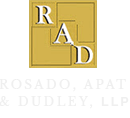What is sick building syndrome?
According to the Cleveland Clinic, the average U.S. adult takes an average of 16 breaths per minute. This means that during a normal eight-hour work day, an employee takes approximately 7,680 breaths. Of course breathing is second nature and most of us don’t give any thought to the action of breathing or to the quality of the air we’re inhaling.
There are times, however, when the air we breathe can be dangerous and even deadly. While most of us take care to change the air filters on our furnaces, clean regularly, scrub away mold and mildew and limit our exposure to smoke or other obvious air pollutants while in our own homes; most workers have little to no control over the quality of the air they breathe while at work.
While certain hazardous and toxic chemicals and materials like formaldehyde and asbestos are known to cause serious health risks to workers who are exposed, there are numerous other materials and contaminants that can also result in workers suffering a range of negative health effects. In cases where workers suffer “acute health and comfort effects,” while at work that have no identified cause, he or she may suffer from a condition known as sick building syndrome.
Symptoms of SBS include headaches, nausea, fatigue, dizziness, sore throat and eye irritation. Depending on the workplace, a worker’s SBS may be caused by a variety of things including poor ventilation, biological contaminants and indoor or outdoor contaminants. In many cases, it can be extremely difficult to pinpoint the exact cause of SBS and some workers may be more sensitive to certain things like cleaning agents, adhesives, bacterias and exhaust fumes than others.
Workers who are suffering from SBS would be wise to report their symptoms to an employer. In some cases, it may also make sense to discuss one’s symptoms and the possible causes with an attorney.
Source: EPA.gov, “Indoor Air Facts No. 4 (revised) Sick Building Syndrome,” Sept. 2, 2015









